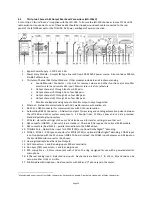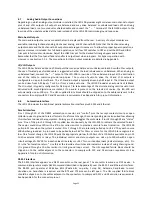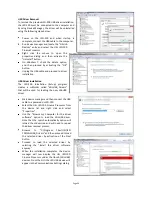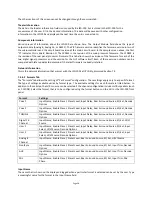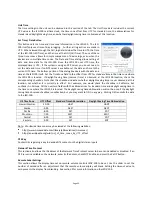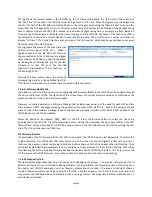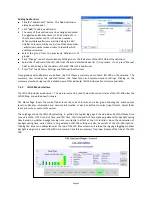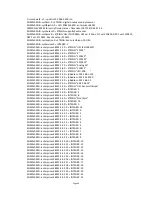
Page 32
11.
Smooth equalizer settings to avoid large transitions between adjacent bands while keeping RTA data
within limits.
12.
Adjust output trim to target SPL. The target SPL is specified in AutoEQ.ini as StageSPL and SurroundSPL,
typically 85dB and 82dB, respectively.
13.
The pink noise is left on to allow final manual adjustments.
Flatten
Press this button to return the equalization to flat (all bands at 0dB).
Curve
File
Press this button to load a curve file from the “My Documents/ USL/JSD-100/EQ Curves” directory. The installer
placed several curve files for different sized auditoriums in this directory. Current practice is to use one of the X-
Curve files, based on auditorium size. N-Curves are also available for use with loudspeakers with poor high
frequency response. If a custom equalization curve is required, use one of the existing files as a template to create
new curve limit file using a text editor. See Appendix E for the Curve File Format.
7.4.6.4 Stage Outputs Tab
The stage outputs tab provides a method of trimming the output level of each audio channel, muting the channel,
inverting the phase, or driving it with a generator (pink noise, tone, or a tone sweep). These controls are generally
set one by one from the Equalizer tab. This tab makes all the settings visible at once. In addition, this output tab
allows the user to name each of the channels. The name above each control can be changed as desired. This
information is saved in the JSD-100 and will be restored to the GUI the next time this particular unit is connected
to.
7.4.6.5 Surround Outputs Tab
The surround outputs tab provides a method of trimming the output level of each audio channel, muting the
channel, inverting the phase, or driving it with a generator (pink noise, tone, or a tone sweep). These controls are
generally set one by one from the Equalizer tab. This tab makes all the settings visible at once. The surround delay
for each channel pair can be adjusted on this screen. In addition, this tab allows the user to name each of the
channels. The name above each control can be changed as desired. This information is saved in the JSD-100 and
will be restored to the GUI the next time this particular unit is connected to.
The surround delay is set usually based on the length and width of the auditorium. Formulas to determine the
surround delay with auditorium Length and Width in meters and feet are provided.
Surround Delay Using Meters
With Length and Width of the
auditorium
in
meters,
the
surround delay, in ms, should be
(L/3)-(W/6)+20.
Surround Delay Using Feet
With Length and Width of the
auditorium in feet, the surround
delay, in ms, should be set to L-
(W/2)+20.
7.4.6.6 Global Tab
Global settings, those that do not
change with format or EQ set, are
set or displayed here.
Summary of Contents for JSD-100
Page 12: ...Page 12...



